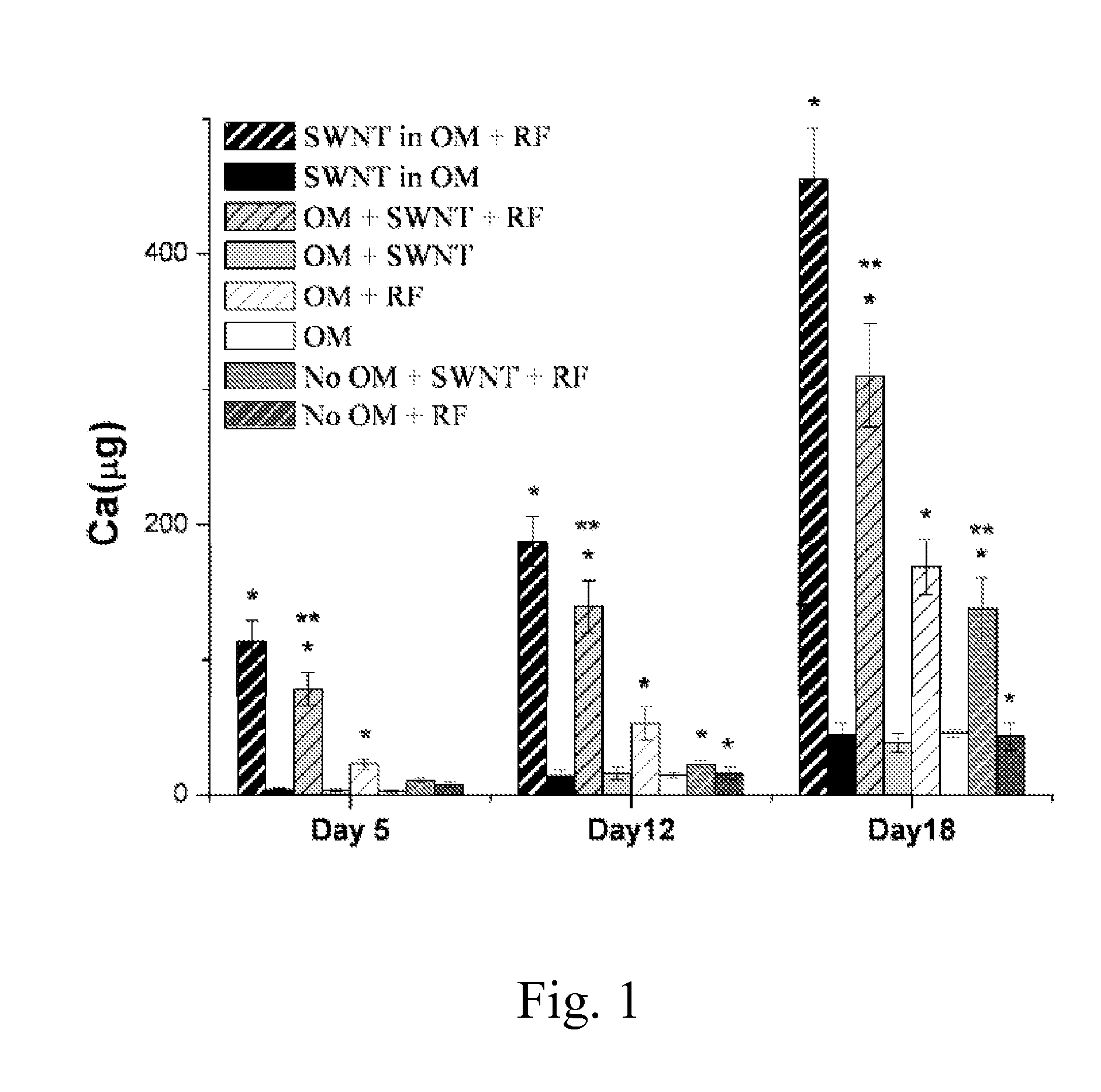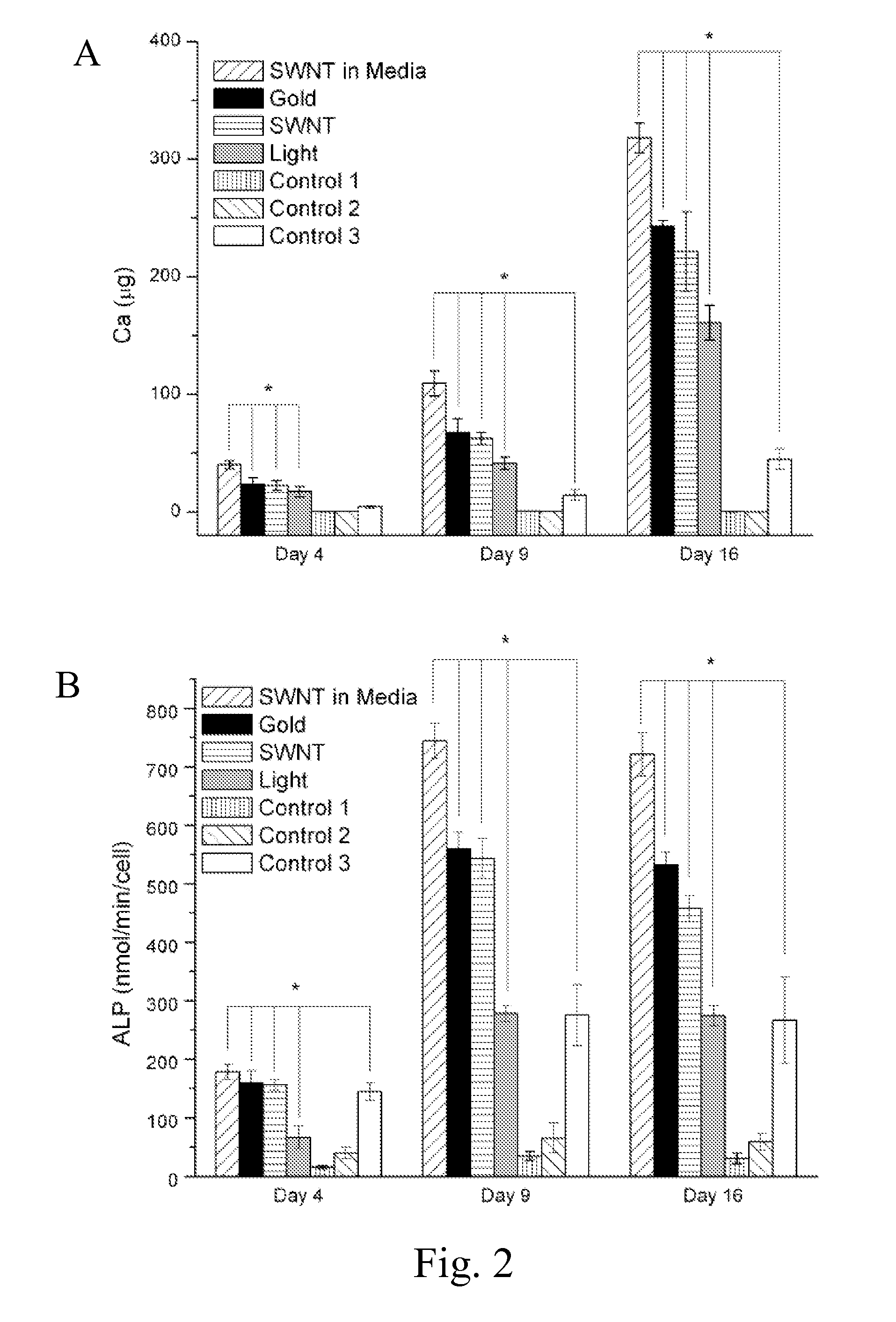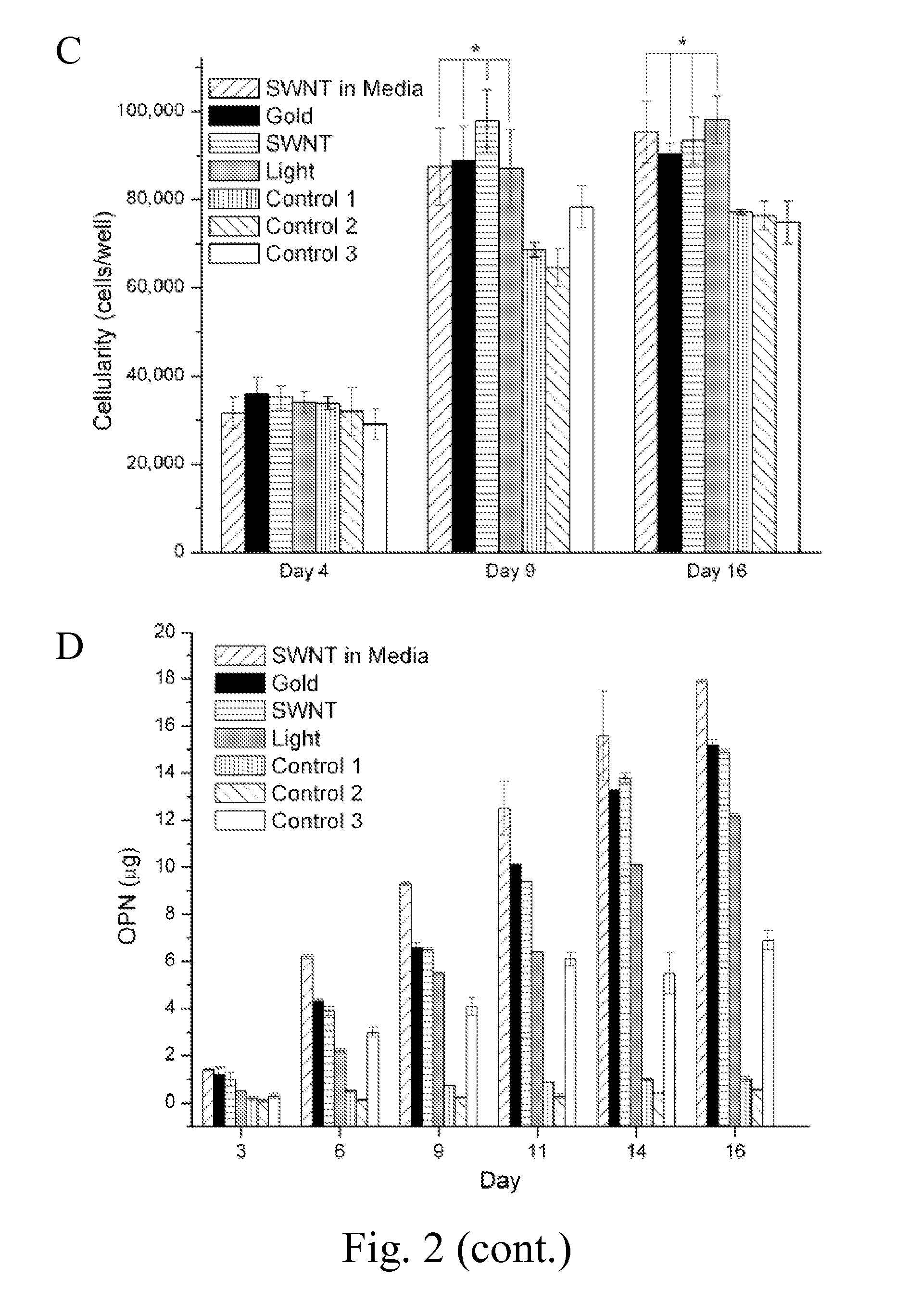Differentiation of stem cells with nanoparticles
a technology of stem cells and nanoparticles, applied in the direction of skeletal/connective tissue cells, applications, therapy, etc., can solve the problems of tumor destruction and localized increas
- Summary
- Abstract
- Description
- Claims
- Application Information
AI Technical Summary
Benefits of technology
Problems solved by technology
Method used
Image
Examples
example 1
Stimulation with SWNTs and RF
[0047]Mouse bone marrow stromal cells (ATCC crl-12424) were seeded at 20,000 cells per well in 24 well plates and cultured in non osteogenic media containing Dulbecco's modified essential medium, 10% fetal bovine serum, and 1% penicillin / streptomycin, or osteogenic media (OM) which also contained 10−8 M dexamethasone, 10 mM β-glycerophosphate, and 5 μg / ml L-ascorbic acid. For the groups “SWNT in OM +RF” (radiofrequency) and “SWNT in OM”, the SWNTs were directly incubated with the MSCs. To resolve the contribution of mechanical acoustic waves generated from the SWNTs on the differentiation of the MSCs, other groups were created which avoided direct contact of the SWNTs with cells. Using 12 mm circular glass cover-slips, 2 μg of SWNTs were secured below (on the outside) the surface of half of the cell plates containing OM and non-OM and these SWNTs had no direct contact with the cells.
[0048]Every group was stimulated with RF at 3 GHz, with a 0.5 μs pulse d...
example 2
Stimulation with Nanoparticles and Laser
[0051]MSCs were cultured in 15 mm tissue culture plates. SWNTs or GNPs were added at 10 PPM directly to the culture. To resolve the contribution of mechanical acoustic waves generated from SWNTs or GNPs to differentiation of MSCs, SWNTs and GNPs were placed on a slide underneath the cell culture plates, avoiding direct contact with the cells. A control culture of MSCs was stimulated by laser in the absence of nanoparticles. Each culture was stimulated for 10 minutes per day by a 532 nm Nd:Yag laser with a 10 mJ pulse energy, 200 nanosecond pulse duration, 10 Hz repetition rate, and a duration of 4, 9, or 16 days. The differentiation of MSCs for the stimulated culture and a non stimulated control culture was determined by analysis of known indicators of the osteoblast phenotype including cell proliferation, production of alkaline phosphatase (ALP), deposition of a calcified matrix, and osteopontin (OPN) expression (FIG. 2A-D, FIG. 3). After 16 ...
example 3
Indirect Stimulation
[0054]The Ca content at day 16 was compared for cells that were stimulated directly or indirectly. The cells were cultured in wells coated with SWNTs, coated with gold nanoparticles, or uncoated. Wells on which the laser impinged were considered directly exposed, while adjacent cells, which were not exposed directly to the laser pulse were considered indirectly exposed (FIG. 4). No statistically significant difference in the Ca content was observed for wells directly in the pathway of the laser light or the adjacent wells. These results indicate that for SWNT, gold nanoparticles, and pulsed laser light alone, the observed effect is mainly due to the acoustic waves. However, the greater Ca content for SWNT (˜221 μg) compared to light (˜161 μg) suggests that the acoustic waves generated by SWNTs have a greater beneficial effect on the cells.
PUM
 Login to View More
Login to View More Abstract
Description
Claims
Application Information
 Login to View More
Login to View More - R&D
- Intellectual Property
- Life Sciences
- Materials
- Tech Scout
- Unparalleled Data Quality
- Higher Quality Content
- 60% Fewer Hallucinations
Browse by: Latest US Patents, China's latest patents, Technical Efficacy Thesaurus, Application Domain, Technology Topic, Popular Technical Reports.
© 2025 PatSnap. All rights reserved.Legal|Privacy policy|Modern Slavery Act Transparency Statement|Sitemap|About US| Contact US: help@patsnap.com



